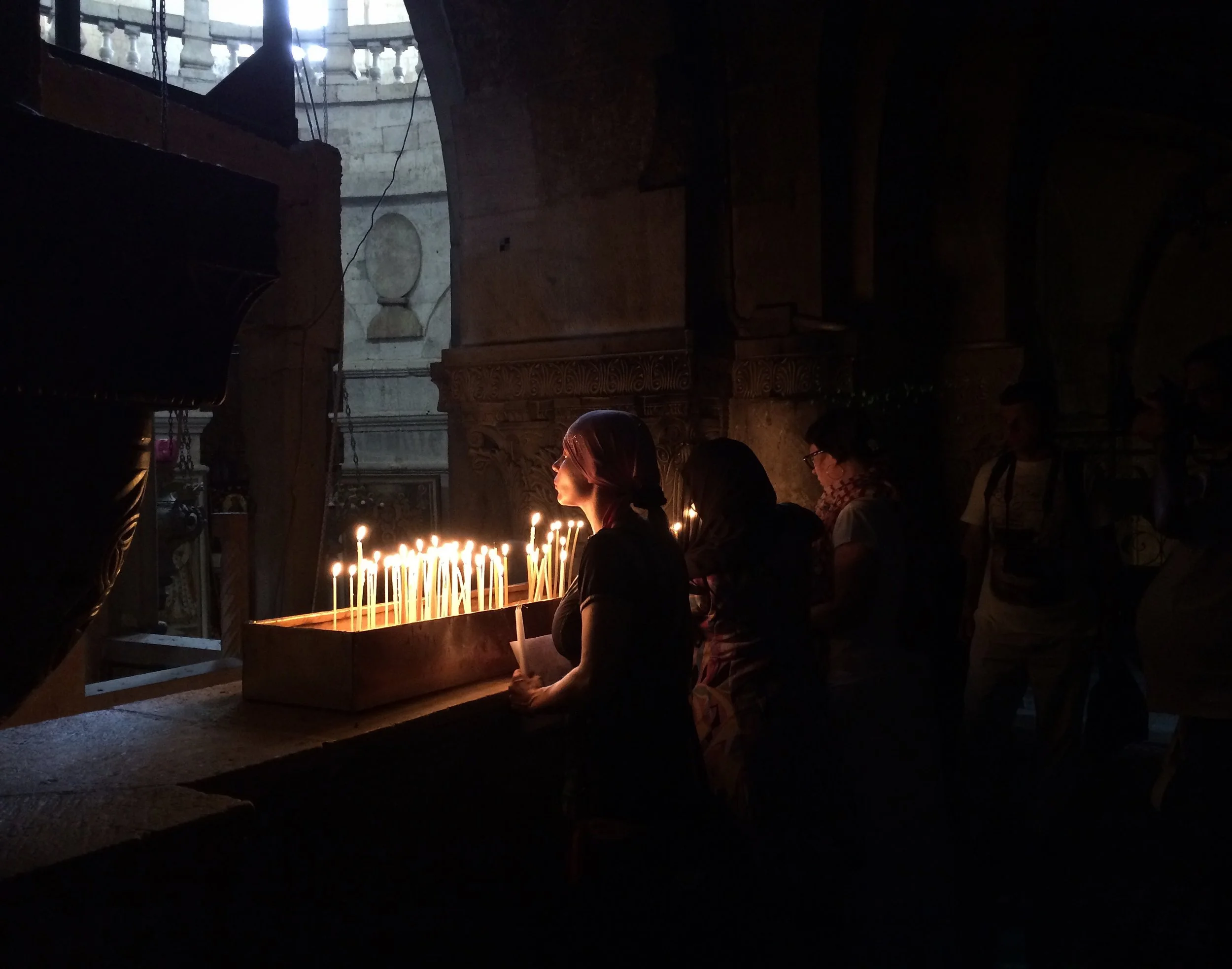Where Do We Go For Transcendence?
4 MIN READ
Take a moment to read the philosophy behind Coucou Home. If you connect with it, then sign up for my monthly newsletter.
The root of transcendence is in trees. Its long history predates the wooden structures that define the places in which we worship today. Without transcendence we are aimless creatures, so what happens when the trees disappear?
After finishing a tour of France that ended in Paris, Lindsey Brown Rahn shared a video from the Trocadero. Behind her on the horizon, the Eiffel Tower stood at stiff attention alongside a plume of smoke. Notre Dame was burning.
Lindsey and her mother had planned to visit the cathedral in the evening, but it wouldn’t be so. First responders evacuated the area adjacent to the cathedral saving the main building, two towers, and one-third of the roof. Gone were Notre Dame’s iconic spire and its forest of rafters, but from its ashes arose a question of transcendence.
For many children, Notre Dame came alive via Disney’s quirky interpretation of Victor Hugo’s French gothic novel The Hunchback of Notre Dame. Whatever the introduction, unknown to most people is that the book’s original title was Notre-Dame de Paris, a fact which historian of France and literary biographer, Rob Zaretsky, believes underscores the cathedral itself as “the most important aspect of the novel.”
When Hugo began writing his novel in the early part of the 1800s, much of Notre Dame was in disrepair and had been scavenged. Following the French Revolution, a program of dechristianization swept the country. Notre Dame was not without its scars.
“Notre Dame was not without its scars.”
Revolutionaries destroyed all of the large statues on the building’s facade with a notable exception of the Virgin Mary. The goddess of Liberty—or as the French dubbed her, Marianne—replaced several Mary statues. Notre Dame was rededicated to the Cult of Reason and later, under Robespierre, the Cult of the Supreme Being. When Robespierre's life was extinguished, so too was any hope that Notre Dame would catalyze transcendence.
Victor Hugo recognized the power of Notre Dame and other buildings like it not as relics to the past, but as keys to remember it, writing in Book V, Chapter 2 of Notre-Dame de Paris:
There exists in this era, for thoughts written in stone, a privilege absolutely comparable to our current freedom of the press. It is the freedom of architecture.
King Louis the VII and Pope Alexander III were present at the laying of Notre Dame’s cornerstone in the spring of 1163. However, they weren’t the first to welcome a sacred building on the site.
With their forest of arches, dappled light, and a hushed sense of reverence, it's no coincidence that cathedrals often recall the woodlands they’ve replaced. Before the existence of cathedrals like Notre Dame, forests served as places where Druids performed religious rites.
When the Romans arrived, they uprooted Celtic worship by cutting down the Druids’ sacred groves and smashing their altars. Many other groves met a similar fate in the forced conversion of these Earth-revering peoples.
Once the groves were cleared, the Romans built austere, stone temples. Although simple in design, they were complex places of worship. For example, at Île de la Cité, workers found a pillar, one of the oldest monuments in Paris, which confirmed the existence of a Gallo-Roman temple before Notre Dame was built on the site.
The pillar, dedicated to the god of lighting, Jupiter, also included Gallic god names, suggesting that the area was sacred for several generations of inhabitants, including the Celtic tribes. By the time of Christianity, the temple was succeeded by four churches, the last of which was demolished to erect Notre Dame. With the cathedral's completion in 1345, the forest symbolically returned.
“It transcends religion, indeed the vibration and gravity of her interior are sacred ground in the same way a grove of ancient trees commands one’s awe.”
Beneath the roof of Notre Dame remains the oldest forest in France. Although partially replaced in the 13th century and refurbished in the 19th century, the intricate framework of beams was given the romantic designation because each of the 1,300 beams was made 800 years ago from an oak tree that was 300 to 400-year-old when it was felled.
Sacred associations with oak trees survived Christianization and often intertwined with pre-existing beliefs. The word Druid comes from the Celtic word for oak, which the Druids believed was host to the strength and energy of their gods. Notre Dame whose bones were oak, was a place in which people gathered strength from their god.
Remarking on the loss of Notre Dame, Nicholas Lima, an artist who had sketched the cathedral’s interior recently wrote, “It transcends religion, indeed the vibration and gravity of her interior are sacred ground in the same way a grove of ancient trees commands one’s awe.” Not much has changed.
On April 16, an electrical spark ignited a fire that destroyed France’s oldest forest. In the gray morning light, the damage to Notre Dame was sobering. A steady stream of photographs and reminisces of peoples’ pilgrimages to the cathedral—everyone's Lady—clogged social media. They were eerily familiar to posts made in the U.S. when west coast forest fires rage, or when arsonists attack places of worship. They all seemed to ask one question. Where can we find transcendence in a world where real forests and those places of worship shaped by human hands are set ablaze?
Coucou Home is a place to feel refreshed, find heart sustenance, and heal your spirit. For this reason, it will always be ad-free. If you enjoy my work and value creativity in the world, please consider becoming a patron by making a donation in any amount. Your support is greatly appreciated! Thank you!

